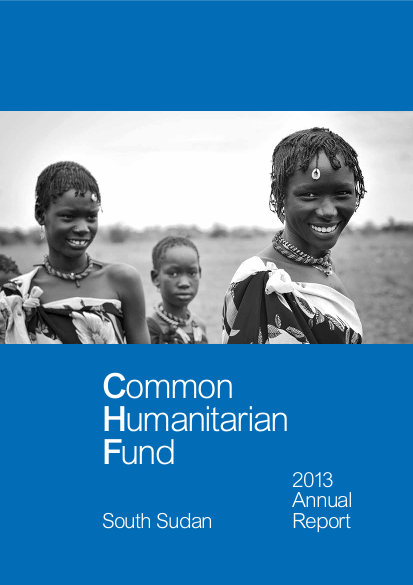Annual report 2013

A shifting context. The operating environment in 2013 was markedly different from the previous year. The refugee situation stabilized to the point where programming transitioned from emergency response to maintenance and care. Violence and displacement decreased in most parts of the country. Work on the South Sudan Compact and the introduction of a new pooled fund to support the health sector signalled new development opportunities. At the same time, conflict in Jonglei State triggered a major emergency and a large-scale humanitarian response. At the very end of the year the country was engulfed in a dramatic new crisis with extensive conflict and displacement. A huge relief operation and concerted efforts to mitigate widespread hunger will dominate 2014 and beyond. Contributions in a competitive environment. With US$92m in new contributions during the year from eight donors, the CHF was again the biggest fund of its kind around the world. However, total income was down by 22 per cent as compared to 2012, as high-profile crises, particularly Syria, competed for resources. The contributions nonetheless enabled the CHF to be the third largest source of funding for projects in the Consolidated Appeal (CAP), providing 8 per cent of total requirements and 12 per cent of all the resources secured against the appeal. Allocations responsive to priorities. The CHF supported 139 CAP projects through 208 separate funding allocations. 83 per cent of these went to top priority projects, demonstrating the responsiveness of the CHF to the shifting priorities of the aid operation. NGOs received just over half of all allocated funds, up from 42 per cent in the preceding year. The share allocated to national NGOs increased by 50 per cent. The fund played two main roles. For some projects it provided a small share of the total funding needed to fill gaps and leverage resources from other sources. For other time-sensitive and top priority projects the CHF was the main source of funding to ensure timely procurement and delivery of lifesaving assistance. Alignment with the seasonal calendar. Efforts to align the timing of contributions, allocations and disbursements with the seasonal calendar had mixed results. The first standard allocation conducted in February was marked by a protracted period of disbursements up to July and delays in the start-up of several projects. The alignment was better for the second standard allocation conducted in August. Most donor contributions were secured in the same month as the allocation, shortening the disbursement period and speeding up the start-up of projects. Monitoring, reporting and results. Between March 2013 and March 2014, through CHF funding approximately 1.6 million people received some form of humanitarian assistance. The fund piloted innovative M&R arrangements in 2013. The placement of M&R Specialists with clusters enhanced oversight of CHF-funded projects and reinforced clusters’ capacity to monitor and report on the overall response in their sectors. The M&R mechanism also helped new funding allocations to best meet beneficiaries’ needs. CHF stakeholders have recognized that embedding M&R Specialists within clusters is an efficient way to strengthen accountability of humanitarian activities. To build on these achievements, it will be important to put these arrangements on a sustainable footing in 2014. Progress and challenges. The second year of operation saw substantive improvements in many areas of the CHF’s governance, management and operations. There is scope for more progress on alignment of contributions, allocations and disbursements; donor diversification and resource mobilization; comprehensive risk management arrangements; and communications with stakeholders.
